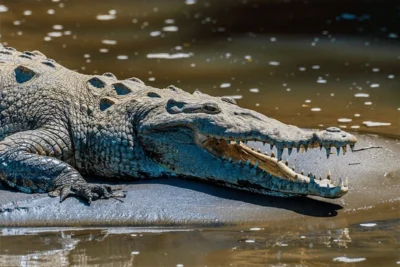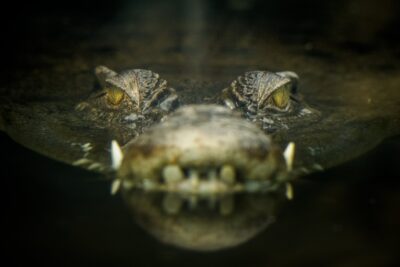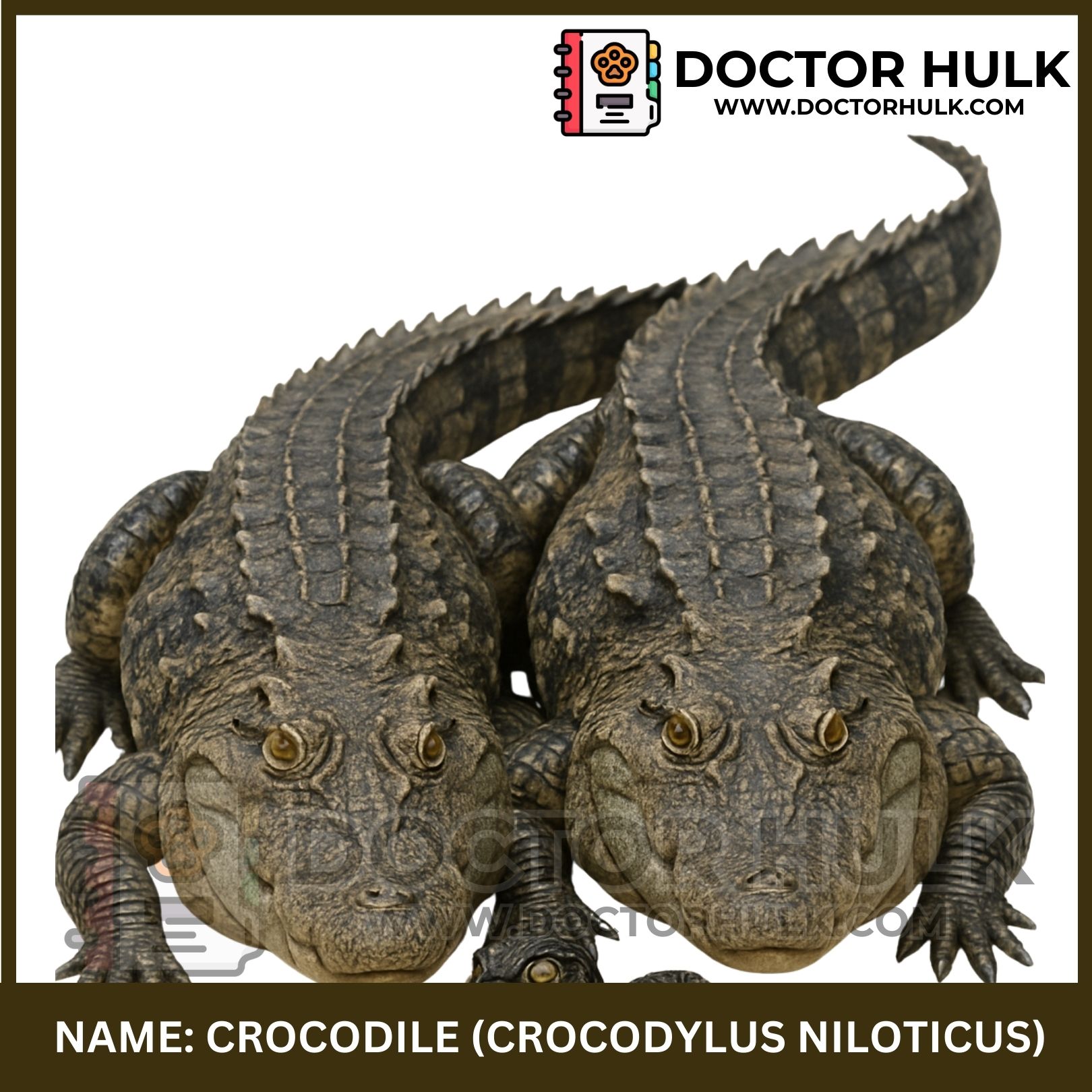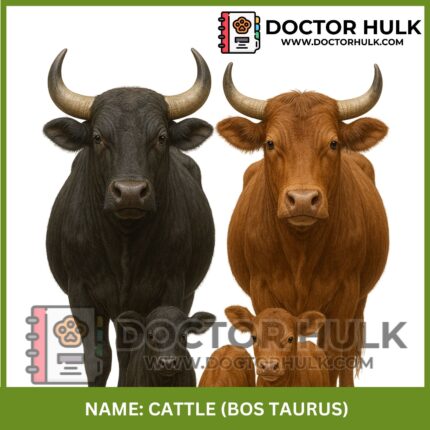Crocodiles are large, powerful reptiles that live in rivers, lakes, and swamps. Known for their tough skin, strong jaws, and quiet movements, crocodiles are some of the oldest living creatures on Earth. These fierce hunters have survived for millions of years, and they continue to rule many African waterways today.
Scientific Classification
-
Kingdom: Animalia
-
Phylum: Chordata
-
Class: Reptilia
-
Order: Crocodylia
-
Family: Crocodylidae
-
Genus: Crocodylus
There are several species of crocodiles, but the most common in Africa is the Nile Crocodile (Crocodylus niloticus), the second-largest reptile in the world.
Common Names
-
Crocodile
-
Nile Crocodile
-
“Krokodilu” or “Kadafi” (Hausa)
-
“Alligbatoro” (Yoruba)
-
“Mamba” (Swahili)
Geographic Distribution
Crocodiles are found in freshwater habitats across:
-
Sub-Saharan Africa
-
Madagascar
-
Parts of the Nile River system
-
Swamps, rivers, lakes, and marshes
They need warm climates, so they are not found in cold places.

Image showing a large crocodile lying on a riverbank with its mouth slightly open (Source: Shutterstock)
Physical Characteristics
Crocodiles are built for strength and survival.
-
Thick, scaly skin for protection
-
Powerful tail used for swimming and defense
-
Sharp teeth that grab and hold onto prey
-
Eyes and nostrils on top of the head to see and breathe while mostly underwater
-
Webbed feet for swimming
Size:
-
Nile crocodiles can grow up to 5–6 meters long (16–20 feet)
-
Weigh between 400–1,000 kg
-
Lifespan: 50–70 years, sometimes more in the wild
Behavior and Lifestyle
Crocodiles are cold-blooded and spend much of their time resting to conserve energy.
-
Stay in the sun to warm up
-
Hunt mostly in water, often at night
-
Solitary animals but can gather in feeding spots
-
Use stealth and patience to catch prey
-
Can go weeks without eating if food is scarce
Though they look slow on land, crocodiles can move quickly in short bursts when needed.
What do crocodiles eat?
Crocodiles are carnivores, they eat meat only.
They feed on:
-
Fish and frogs
-
Birds
-
Antelope and livestock (that come close to water)
-
Carrion (dead animals) when available
They swallow food whole or tear large pieces using a “death roll.”
Fun facts
-
Crocodiles have been on Earth for over 200 million years.
-
A croc’s jaw can snap shut with incredible force, but it opens more slowly.
-
Crocodiles cry “tears” to clean their eyes, not because they feel sad.
-
Their heart has four chambers, like humans, which is rare in reptiles.
-
Female crocs build nests and guard their eggs fiercely.
Importance to Humans
Crocodiles are feared but also respected and useful in many ways:
-
Control fish and animal populations in rivers
-
Important to ecosystems and biodiversity
-
Hunted for leather, meat, and traditional medicine
-
Featured in cultural stories, symbols, and warnings
-
Attract tourists in wildlife parks and river tours
In some places, crocodiles are protected because of overhunting and habitat loss.
Health & common issues
In the wild, crocodiles are tough survivors but still face challenges.
Common health concerns (especially in captivity):
-
Infections or wounds from fights
-
Mouth and skin diseases from poor water
-
Parasitic worms or ticks
-
Nutritional problems if not fed properly
-
Stress and aggression when confined in small spaces
Veterinary needs (in zoos or farms):
-
Regular checks for skin health
-
Clean water and proper diet
-
Controlled breeding to avoid inbreeding
-
Safe handling by trained professionals
Conservation Status
Most crocodile species are not endangered, but some local populations are at risk.
The Nile Crocodile is listed as Least Concern, but still threatened in some areas due to:
-
Habitat destruction
-
Poaching for skin and meat
-
Fear and conflict with humans
Conservation actions include:
-
Laws to protect crocodile habitats
-
Controlled farming instead of wild hunting
-
Public education to reduce fear and killing
-
Eco-tourism that supports conservation efforts
Crocodile vs. Alligator
Many people confuse crocodiles with alligators. Here’s how they differ:
| Feature | Crocodile | Alligator |
|---|---|---|
| Snout shape | V-shaped, longer and thinner | U-shaped, broader and shorter |
| Location | Africa, Asia, Australia, Americas | Mostly USA and China |
| Salt glands | Active (can live in salty water) | Weak (prefer freshwater) |
| Teeth when mouth is closed | Visible upper and lower teeth | Only upper teeth are visible |

Image showing a crocodile submerged in water, eyes and nostrils just above the surface (Source: Newsweek)
Need expert help with reptiles or exotic animals? Contact Doctor Hulk Veterinary Hospital Today @ 08143397614.













Reviews
There are no reviews yet.